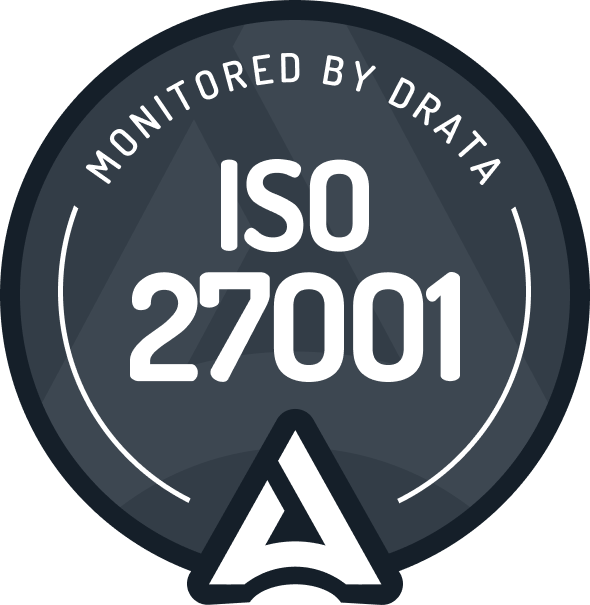Choosing the Right HRIS Vendor

We are often asked about our views on which Human Resources Information System (HRIS) vendor an organisation should choose. The truth is, there is no one-size-fits-all answer.
In fact, choosing an HRIS is one of the most critical decisions your organisation will make. It's not just about finding a system that meets your immediate needs; it's about aligning with a partner who will support your growth, compliance, and employee engagement for years to come.
But how do you make such a decision with confidence?
Download our guide on selecting the right HRIS system here.
The Importance of Understanding Your Needs
Before diving into the sea of HRIS vendors, it's essential to understand your business's unique needs and goals. Start by assessing your current HR processes and identifying inefficiencies. Are you looking to streamline payroll processing? Perhaps enhancing employee engagement is your priority, or maybe it's ensuring better compliance with local regulations.
Once you've defined your objectives, it's time to engage key stakeholders from HR, IT, finance, and senior management. Their buy-in is crucial for the success of the project, and their insights will help you create a comprehensive requirements checklist.
Building Your Requirements Checklist
Your checklist should cover everything from core HR management features like payroll, time tracking, and benefits administration to technical requirements such as data security and scalability. Don’t forget to consider integration needs—how well will this system work with your existing software?
It’s also important to acknowledge that no single system can solve all compliance needs, particularly as things like legislation, processes, and business structure change. Therefore, consider whether the HRIS can support add-ons and plug-ins in the future to address specific compliance or operational requirements as they arise.
Research, Shortlist, and Trial
The HRIS market is vast. Conduct thorough research to identify vendors that meet your requirements. Evaluate them based on their features, ease of use, scalability, and customer support.
But don’t just take their word for it—request live demos and trials. This hands-on approach will give you a clearer picture of how well the system meets your needs and how intuitive it is for your team.
Evaluating Costs and ROI
Understanding the cost structure is crucial for making an informed decision. The initial purchase price is just the tip of the iceberg; there are various other costs associated with implementation, customisation, training, and ongoing maintenance. Begin by breaking down these costs into categories such as one-time fees (like implementation and setup costs) and recurring costs (such as subscription fees, licensing, and support). Understanding these categories will help you create a more accurate budget and avoid unexpected expenses later on.
In addition to the obvious costs, it’s essential to consider the costs of potential customisations. As your organisation grows and evolves, you may need to add new features or plug-ins to the HRIS to meet emerging requirements. It’s important to ask vendors about their pricing model for these future additions. Do they offer flexible pricing for scaling up, or are the costs prohibitive? Do they enable third-party add-ons which might be more cost effective? Understanding these aspects upfront can save your organisation from costly surprises down the line.
While understanding costs is vital, the real value of an HRIS lies in its return on investment (ROI). To accurately assess ROI, consider how the HRIS will impact your organisation’s efficiency, accuracy, and compliance. For example, automating payroll processes can reduce the time spent on manual data entry, significantly lowering the risk of errors and associated penalties. Additionally, streamlined HR processes can lead to better employee satisfaction and engagement, which can have a positive ripple effect on overall productivity and retention rates. When calculating ROI, also factor in the intangible benefits, such as improved decision-making through better data analytics and reporting capabilities.
Finally, it's important to view the ROI in the context of your organisation’s long-term goals. A system that offers a lower upfront cost may seem attractive, but if it lacks scalability or the ability to support future add-ons, it may not deliver the best long-term value. Conversely, a system with a higher initial investment might offer greater returns over time if it can grow with your organisation and continue to meet your needs as they evolve - but is that potential over-capitalisation? Conducting a thorough cost-benefit analysis, which includes both tangible and intangible factors, will ensure that you choose an HRIS that not only fits your current budget but also contributes to your organisation's success in the years to come.
Beyond the Basics: Advanced Considerations
Have you considered the vendor’s approach to data ethics and privacy? Or how their commitment to social and environmental responsibility might align with your company’s values?
What about the specific challenges of implementing earned wage access (EWA) programs, or the regional considerations if your operations extend beyond Australia?
And crucially, does the system offer the flexibility to support future add-ons and plug-ins, ensuring it can adapt to new compliance requirements or operational needs that may emerge as your business evolves?
The full guide provides detailed insights on these topics, helping you to navigate the often-overlooked nuances of HRIS selection.
The (almost!) Final Steps: References, Contracts, and Implementation
Before making your final decision, check references from the vendor’s existing clients, especially those in similar industries. This will give you insight into how the system performs in real-world scenarios.
Carefully review contract terms, focusing on service level agreements (SLAs), data ownership, and termination clauses. Once you've selected a vendor, negotiate the final terms, including pricing, support levels, and any customisation needs.
When it comes to implementation, work closely with the vendor to develop a detailed plan. This should include timelines, milestones, and responsibilities. Don’t forget to plan for data migration and organise training sessions to ensure a smooth transition.
The Ongoing Journey
Once your HRIS is up and running, the journey doesn't end. Continuous monitoring and optimisation are key to ensuring the system continues to meet your business needs. Establish an ongoing support arrangement with the vendor and maintain a feedback loop with users to keep the system aligned with your evolving requirements.
Where to Next?
This blog post offers a glimpse into the strategic considerations you need to keep in mind when selecting an HRIS vendor. But this is just the beginning.
The full guide dives deeper into the essential features your HRIS must have, from payroll management to performance tracking, and offers a nuanced look at additional considerations that can make or break your choice—like evaluating smaller, more agile vendors against larger, well-established ones.
Ready to take the next step? Download the full guide now and ensure you're equipped to make the best decision for your organisation’s future.




.png)


.png)













.webp)

.webp)